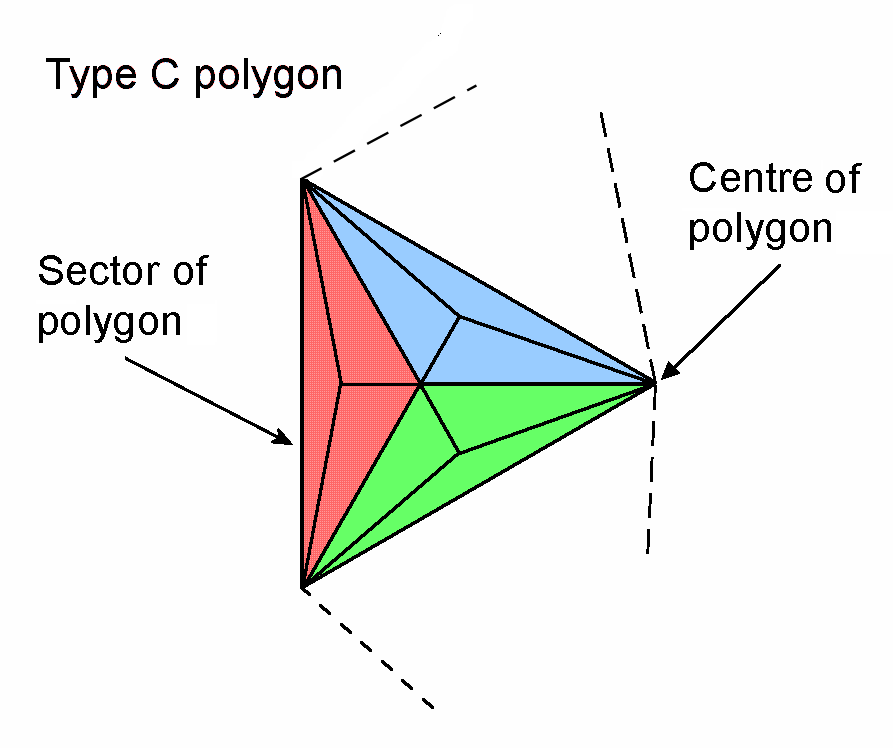
| << Previous 1... 27 28 [29] 30 31 ...39 Next >> |
#29 Properties of the seven Type C polygons

A polygon is Type C when its sectors are Type B triangles with 7 corners & 15 sides of 9 triangles, i.e., 31 geometrical elements, where 15 is the number value of YAH, the Godname of Chokmah, and 31 is the number value of EL, the Godname of Chesed. This means that each sector contributes 28 geometrical elements (5 corners, 14 sides & 9 triangles). The numbers of geometrical elements in a Type C polygon with n sides (note that it need not be regular) are:
| Number of corners of triangles ≡ C = | 5n + 1 |
| Number of sides of triangles ≡ S = | 14n |
| Number of triangles ≡ T = | 9n |
| Total = | 28n + 1 |
("+1" denotes the centre of the polygon). The number of hexagonal yods ≡ H = 2S + T = 37n. The number of corners of the 9n tetractyses = C = 5n + 1. The number of yods ≡ Y = C + H = 42n + 1. The number of yods on sides of tetractyses ≡ B = C + 2S = 33n + 1. Below are tabulated the geometrical and yod compositions of the seven separate Type C polygons that make up the inner form of the Tree of Life ("+7" refers to their seven centres):
|
Number of geometrical elements in the 7 separate Type C polygons |
Number of yods in the 7 separate Type C polygons |
||||||||||||||||||||||||||||||||||||||||||||||||||||||||||||||||||||||||||||||||||||||||||
|
|
Comments
Triangle
The Type C triangle has 85 geometrical elements
(84 surrounding its centre), where
85 = 40 + 41 + 42 + 43
and
84 = 12 + 32 + 52 + 72.
It has 15 corners and 69 sides & triangles surrounding its centre. Compare this with the 2nd-order tetractys, which has 85 yods consisting of 15 corners of ten 1st-order tetractyses and 69 hexagonal yods that surround its centre:
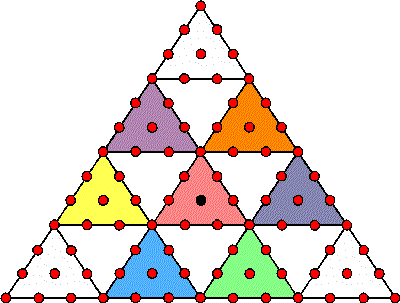
As the first stage in the sequence of development of the seven regular polygons making up the inner Tree of Life, the triangle is the seed embodying the pattern of this Pythagorean representation of holistic systems that flowers in the dodecagon. The two separate Type C triangles have 168 geometrical elements surrounding their centres:
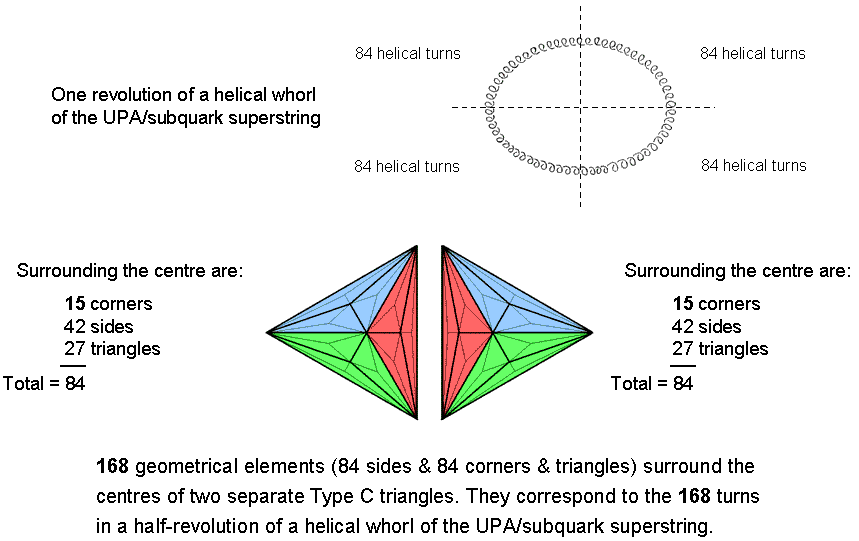
They embody the number value 168 of Cholem Yesodoth, the Mundane Chakra of Malkuth. This is a structural parameter of the subquark superstring, being the number of turns of each half-revolution of a whorl of the UPA. The Type C triangle has 127 yods, where 127 is the 31st prime number and 31 is the number of EL, the Godname of Chesed. The two joined Type C triangles have 246 yods outside their shared side, where 246 is the number value of Gabriel, the Archangel of Yesod. 248 yods surround their centres, where 248 is both the number value of Raziel, the Archangel of Chokmah, and the dimension of E8, the rank-8 exceptional Lie group. Alternatively, they have 248 yods that are intrinsic to them in the sense that they are unshared with the outer Tree of Life, their left-hand and right-hand corners coinciding with, respectively Geburah and Chesed when the outer & inner Trees of Life are superposed:
|
|
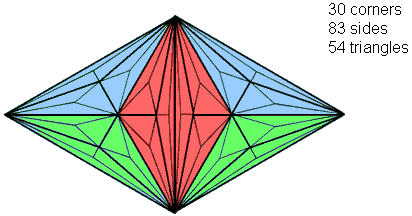 |
| There are 248 yods in the two Type C triangles of the inner Tree of Life that are intrinsic to them because they are unshared with the outer Tree. |
The two joined Type C triangles have 137 sides & triangles. |
Embodied in the two separate and joined Type C triangles are, respectively, the structural and the dynamical parameters of an E8×E8′ superstring! (see also here). The two joined triangles have 137 sides & triangles. They also embody the number 137 determining the approximate value of the fine-structure constant α = e2/ħc ≅ 1/137. As was pointed out in #28, this number so important to atomic and particle physics is embodied in the Type C pentagon.
Square
The two joined Type C squares have 221 geometrical elements surrounding their centres. This is the number of hexagonal yods in the 1-tree and in the seven enfolded Type A polygons outside their shared root edge:
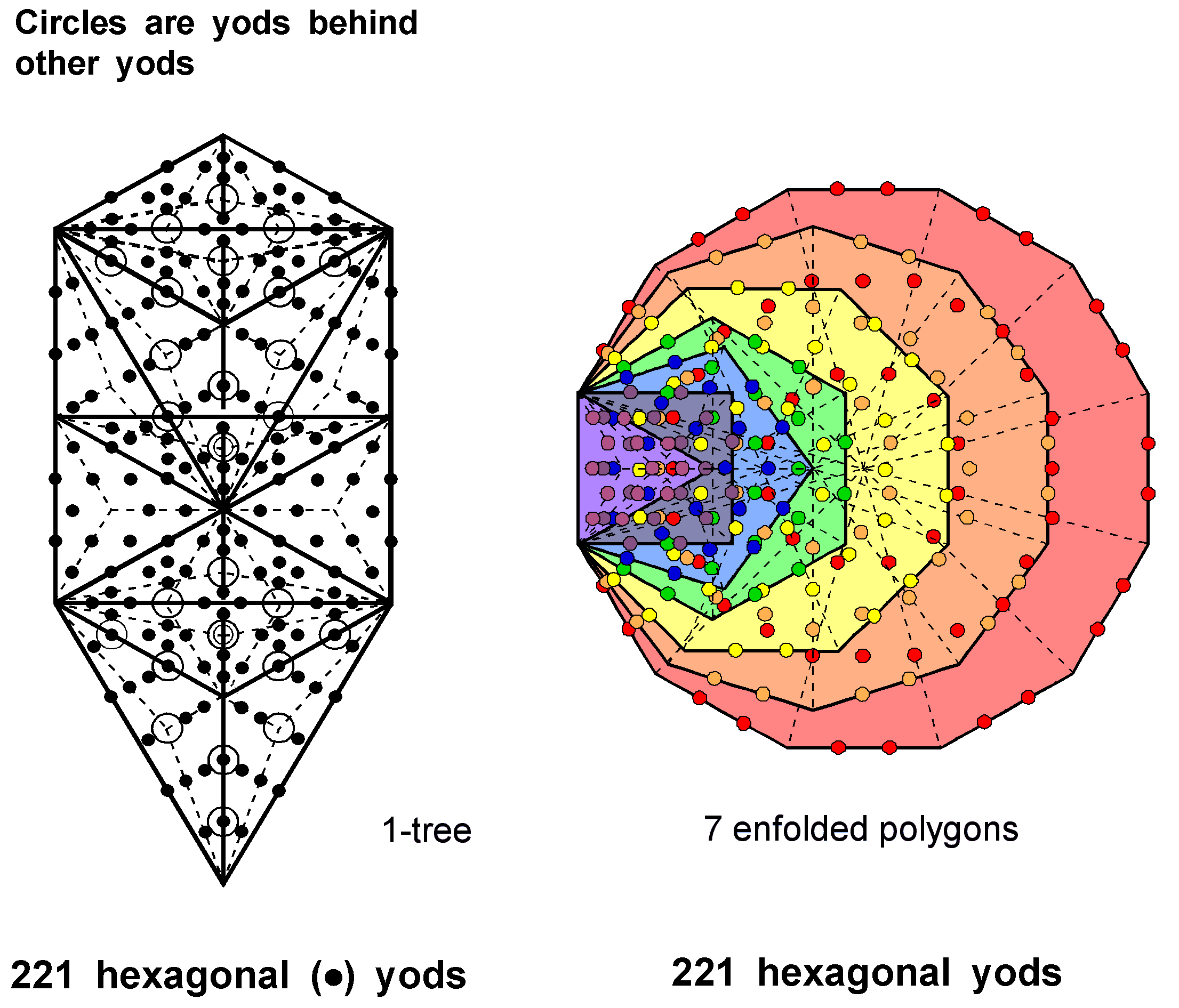
Surrounding the centre of each separate Type C square are 168 yods:
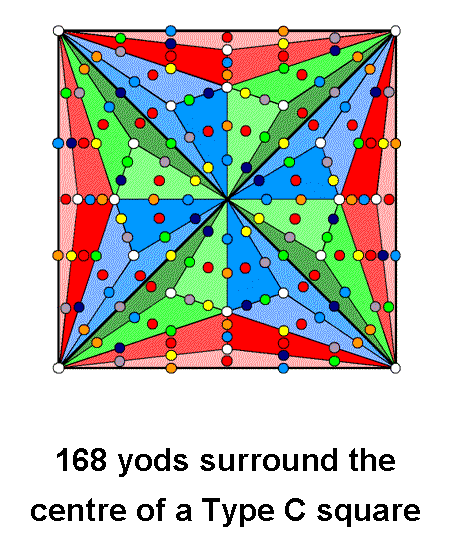
Whereas both separate triangles are needed to embody geometrically this superstring structural parameter, a single square achieves this in terms of its yod composition. It is a remarkable illustration of the Tetrad Principle formulated in Article 1, for the square has four corners and the Type C square is the fourth in the sequence:
Square → Type A square → Type B square → Type C square → ... .
Pentagon
How the pentagon embodies the 206 bones in the human adult skeleton was discussed in #27 of this section. How it embodies the fine-structure number 137 was discussed in #28.
Hexagon
168 geometrical elements surround the centre of the Type C hexagon. They comprise 84 corners & triangles and 84 sides. Its geometrical composition displays the 84:84 division of this number that is characteristic of holistic systems. The Type C hexagon contains 222 hexagonal yods. This is the number of hexagonal yods associated with each set of seven enfolded Type A polygons (see here). 248 yods outside the shared root edge surround the centre of each hexagon. The two Type C hexagons embody the dimension 496 of E8×E8′:
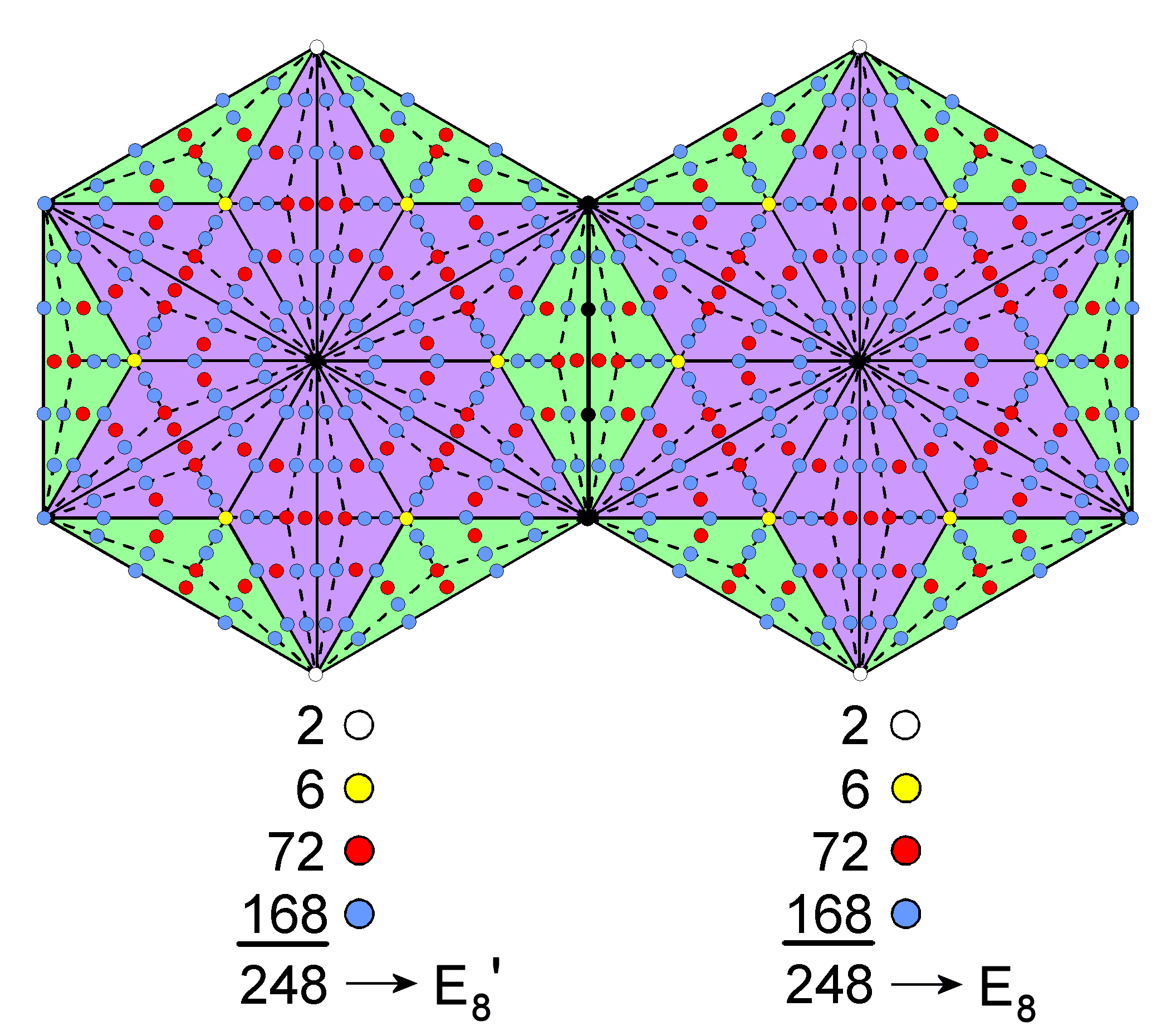
This is highly significant in view of the Tetrad Principle formulated in Article 1, for the Type C hexagon is the fourth in the series of this polygon, which is the fourth type of regular polygon:
Triangle → square → pentagon → hexagon → heptagon → ...
Hexagon → Type A hexagon → Type B hexagon → Type C hexagon → Type D hexagon →....
See #16 here for further discussion of this embedding in the hexagon of the root composition of the heterotic superstring symmetry group E8×E8′.
Octagon
The octagon has 225 geometrical elements, so that the two joined octagons have 444
geometrical elements outside their shared side, 222 in each polygon. This is the number of hexagonal yods in the
inner Tree of Life, 222 hexagonal yods being associated with each set of seven enfolded polygons:
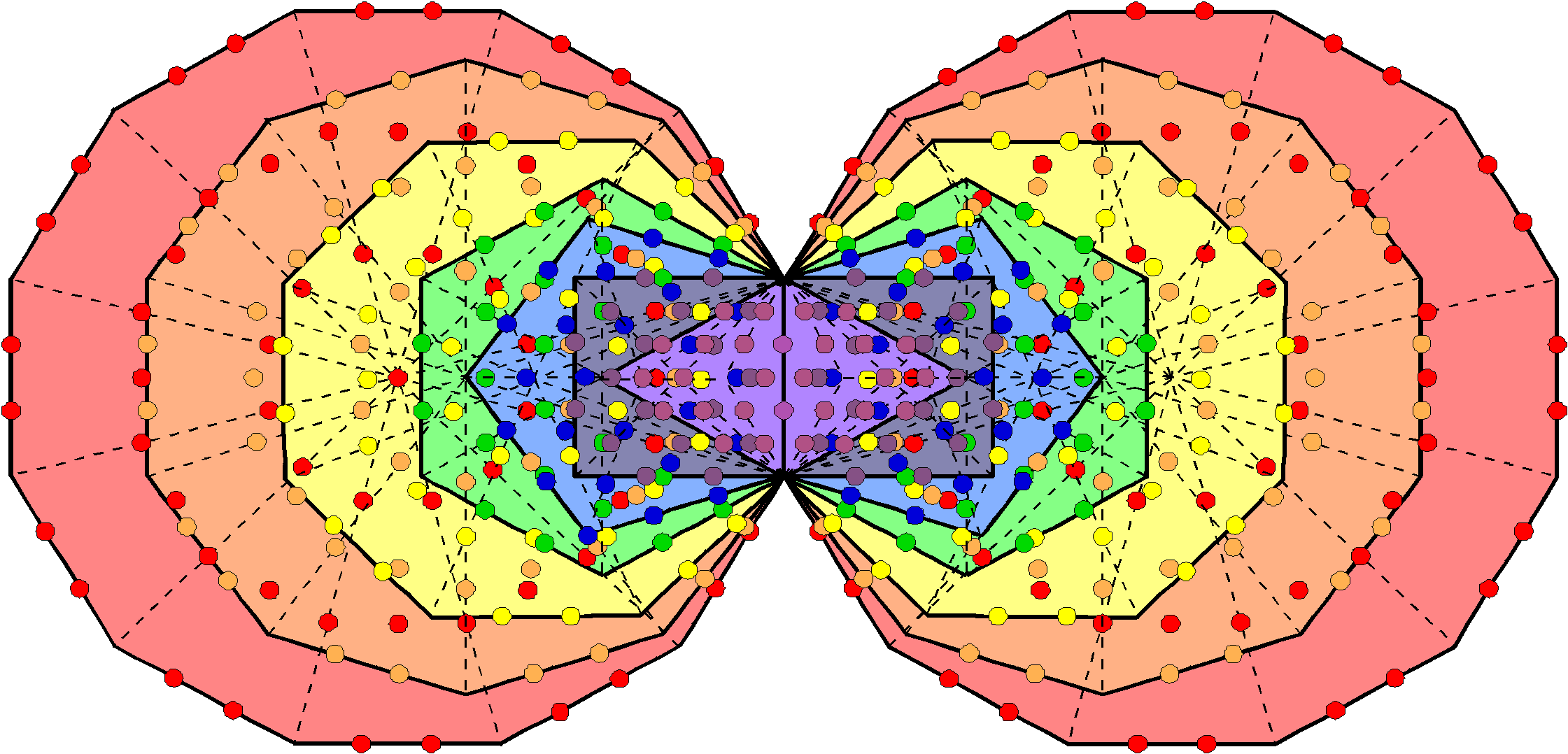
336 yods surround the centre of the octagon:
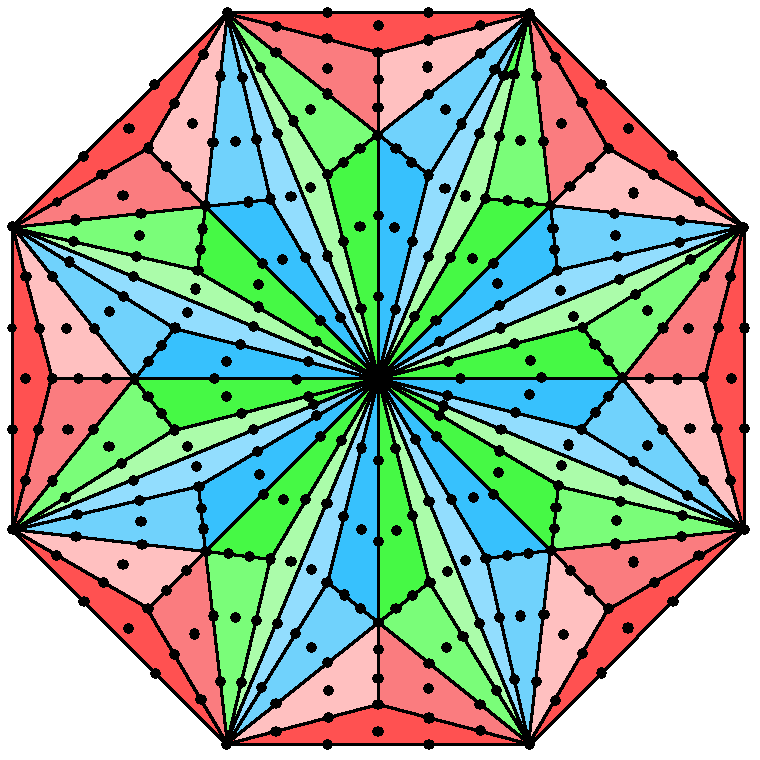
This is the number of turns in one revolution of each whorl of the UPA. The octagon embodies this major structural parameter of the subquark superstring. Surrounding its centre are 264 yods lining the sides of its 72 tetractyses. This is the yod population of the seven enfolded Type A polygons:
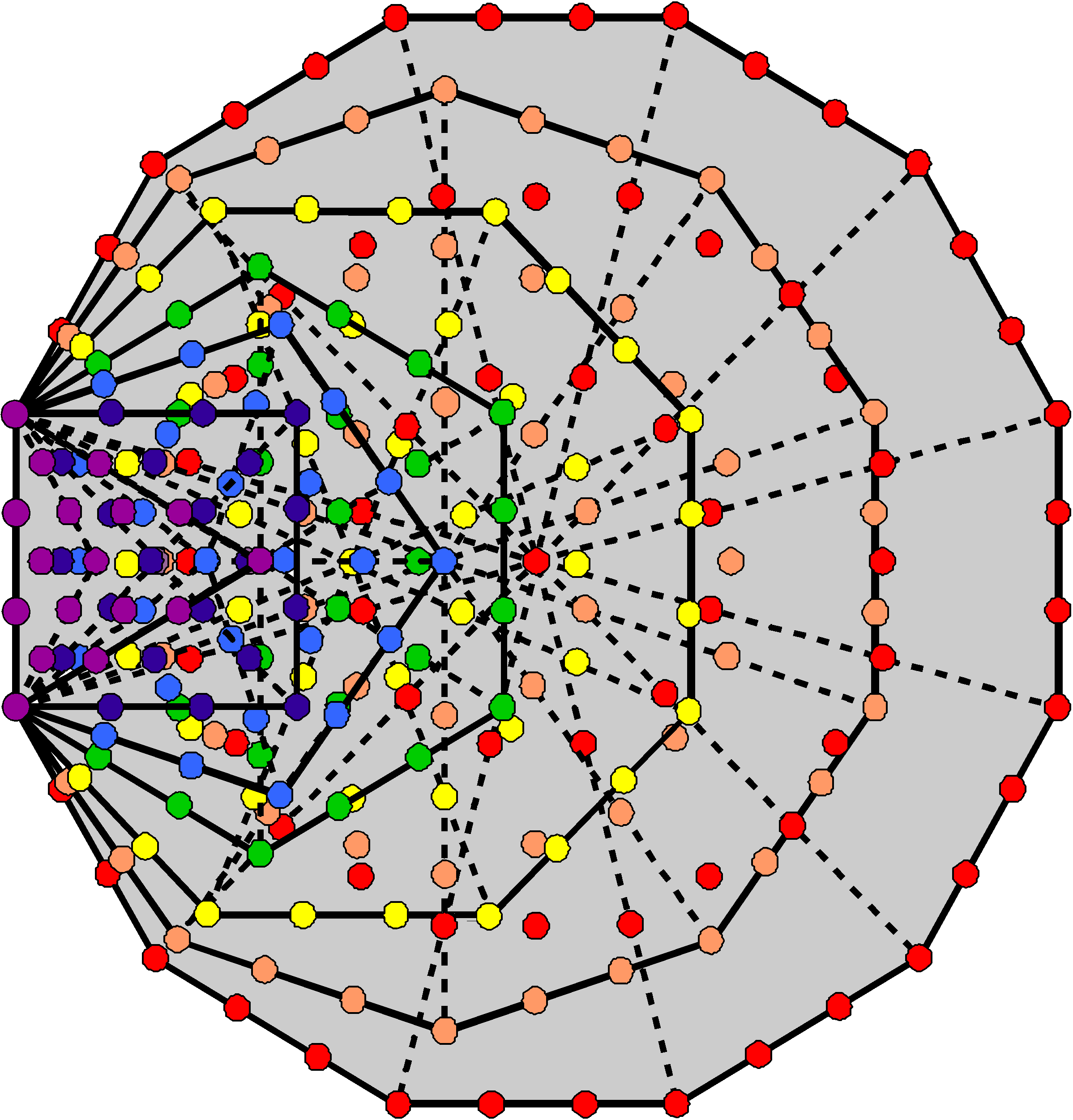
Decagon
280 geometrical elements comprising 50 corners, 140 sides and 90 triangles surround the centre of the decagon. 840 yods surround the centres of two separate decagons. This is the number of turns in an outer or inner half of a whorl of the UPA.
Dodecagon
336 geometrical elements (168 corners & triangles, 168 sides) surround the centre of a dodecagon. This is the number of yods other than corners in two joined Type B dodecagons:
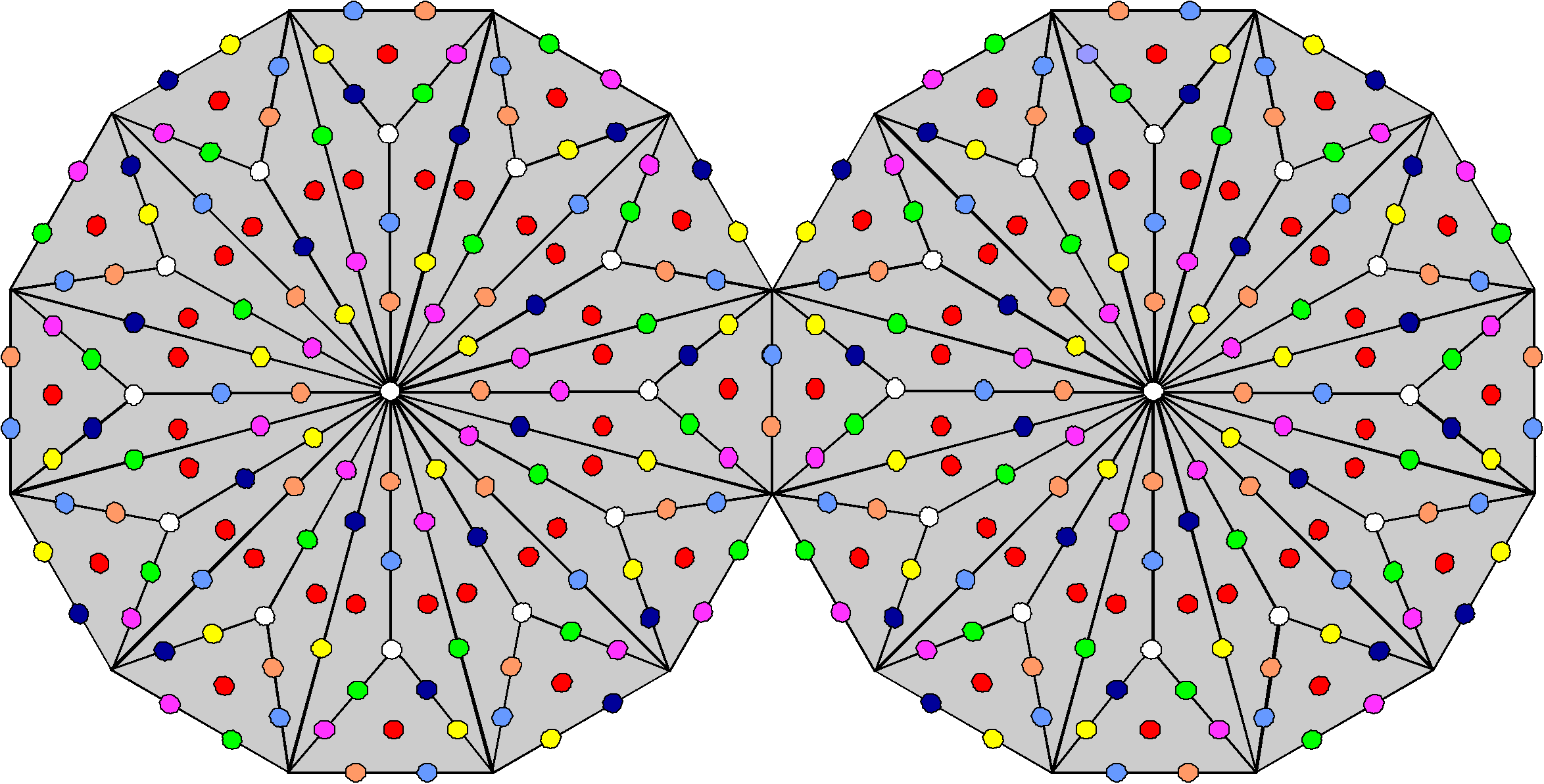
The number 168 factorizes in the geometrical case as 12×14 (12 sectors, 14 sides per sector) — exactly as it does for the yods in each Type B dodecagon, each sector contributing 14 yods other than corners. The holistic division: 336 = 168 + 168 arises because the number of corners & triangles (14n) surrounding the centre of any Type C polygon with n corners is equal to the number of sides (14n) of these triangles (as is the case for Type A & Type B polygons). The dodecagon has 444 hexagonal yods — exactly the same as for the inner Tree of Life. 504 yods surround its centre:
.png)
They comprise 168 black yods (the number of yods in a Type B dodecagon other than the corners of its sectors) and (2×168=336) red yods. The superstring/UPA significance of this is discussed here under the heading "TYPE C DODECAGON", as well as here and here. The way in which the heptagon and outer Tree of Life embody the number 504 is discussed here. The fact that the dodecagon is the first single polygon to embody superstring structural parameters in terms of both its geometrical and yod compositions confirms its unique status as the polygonal version of the outer Tree of Life. 500 (=50×10) yods outside the root edge surround its centre. This is how ELOHIM, the Godname of Binah with number 50, prescribes the yods that construct the dodecagon. Surrounding the centres of the two joined dodecagons (the tenth regular polygon) are (1000=103) yods outside the root edge. This illustrates the power of the Decad to quantify properties of holistic systems.
Properties of the seven separate Type C polygons
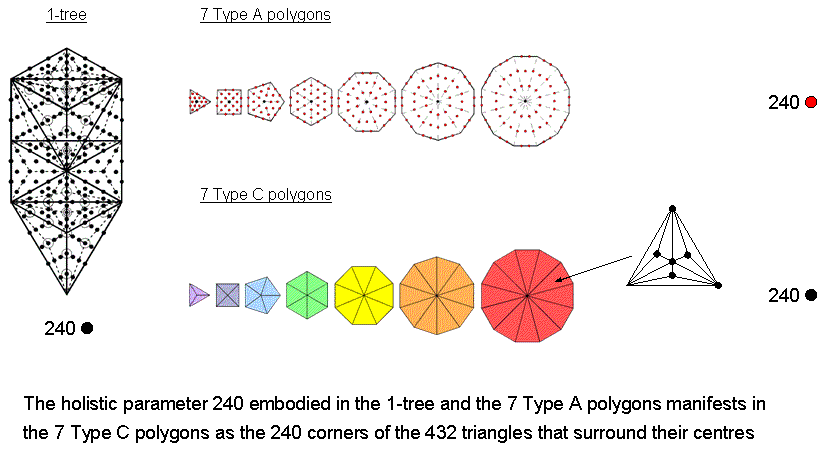
Properties of the seven enfolded Type C polygons
When the seven regular polygons of the inner Tree of Life are enfolded in one another, a corner of the triangle coincides with the centre of the hexagon and a corner of the pentagon coincides with the centre of the decagon. All the 31 geometrical elements making up the sector of the hexagon that is replaced by the triangle disappear, so that, instead of 169 geometrical elements (see table above), the hexagon is now left with five sectors containing (169−31=138) elements. 46 yods also disappear from this sector because it is a Type B triangle with 46 yods, so that, instead of 253 yods, the hexagon is left with (253−46=207) yods. Below are tabulated the geometrical and yod compositions of the seven enfolded Type C polygons outside their shared root edge:
|
Number of geometrical elements outside the root edge in the 7 enfolded Type C polygons |
Number of yods outside the root edge in the 7 enfolded Type C polygons |
||||||||||||||||||||||||||||||||||||||||||||||||||||||||||||||||||||||||||||||||||||||||||
|
|
Comments
|
14 |
|||
| 24 | 24 | ||
| 1300 = 15 + 25 + 35 + 45 = |
34 |
34 |
34 |
|
44 |
44 |
44 44 |
2600 = 512 − 1 = 3 + 5 + 7 + ... + 101
is the sum of the first 50 odd integers after 1 and 101 (the number value of Michael, the Archangel of Tiphareth) is the 26th prime number. This shows how both ELOHIM with number value 50 and YAHWEH with number value 26 prescribes how many intrinsic geometrical elements are needed to construct the (7+7) enfolded polygons, starting with the root edge. Such beautiful harmony between number and geometry is powerful evidence of the archetypal status of this sacred geometry.
root edge that are intrinsic to each set. They include the centre of the triangle, one of whose corners is the centre of the hexagon, the centre of the pentagon, one of whose corners is the centre of the decagon, and 31 polygonal corners. Hence, there are (873−2−31=840) intrinsic corners & sides of triangles that are not either corners of polygons or centres of polygons that have corners shared with other polygons. Outside the root edge of both sets of enfolded polygons are (840+840=1680) such intrinsic sides & corners of triangles. Alternatively, each set of seven enfolded polygons has (including the root edge) 881 corners & sides, of which 41 corners are corners of their 47 sectors, leaving 840 corners & sides, so that both separate sets have 1680 such corners & sides other than corners of sectors. Each set separately embodies the superstring structural parameter 840, whilst both sets of enfolded polygons embody the superstring structural parameter 1680. Ten overlapping Trees mapping the 10 whorls of the UPA have an inner form containing 16800 intrinsic corners & sides that are not pure corners of their (70+70) enfolded Type C polygons. This is the inner Tree of Life representation of the subquark state of the E8×E8 heterotic superstring.